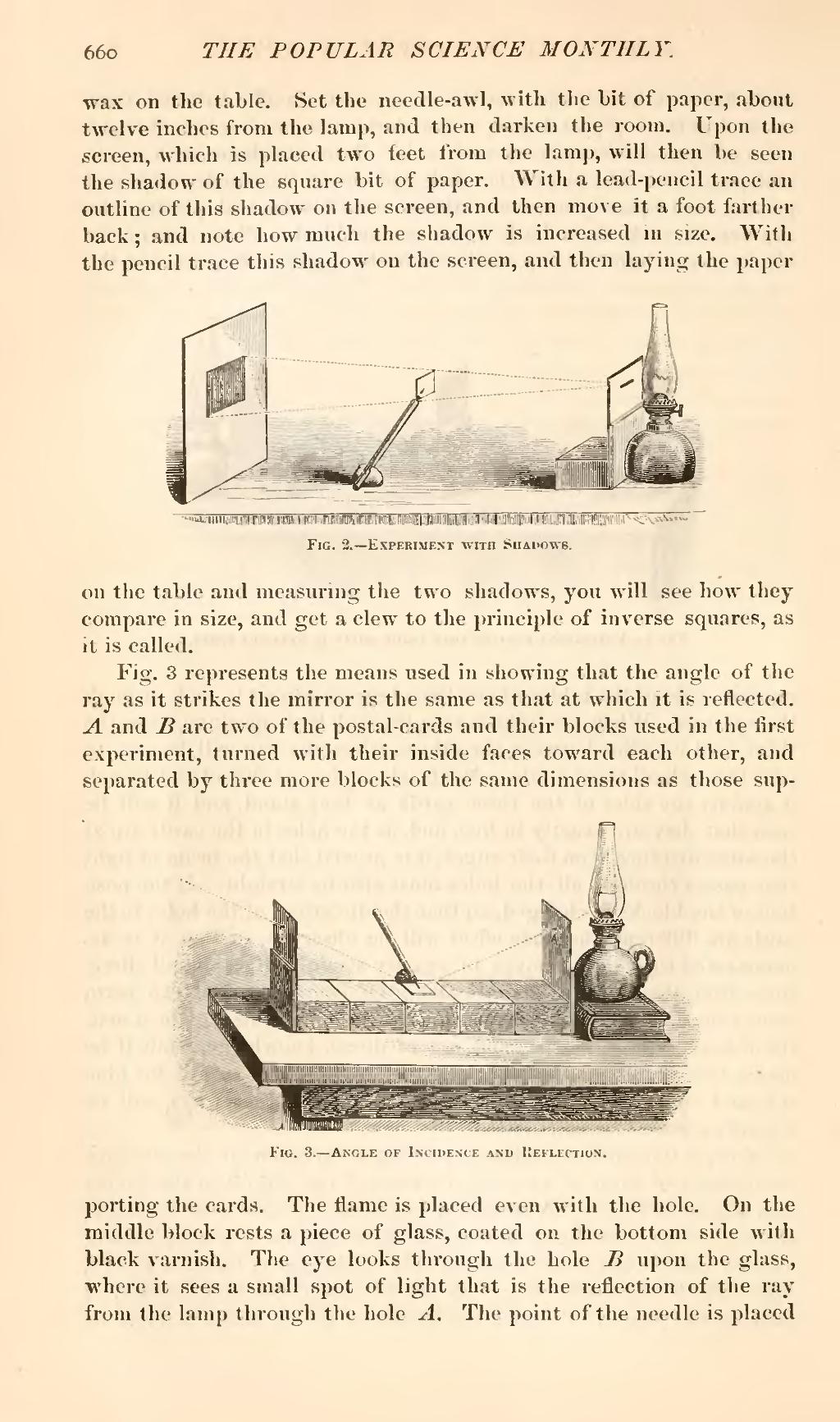wax on the table. Set the needle-awl, with the bit of paper, about twelve inches from the lamp, and then darken the room. Upon the screen, which is placed two feet from the lamp, will then be seen the shadow of the square bit of paper. With a lead-pencil trace an outline of this shadow on the screen, and then move it a foot farther back; and note how much the shadow is increased in size. With the pencil trace this shadow on the screen, and then laying the paper

Fig. 2.—Experiment with Shadows.
on the table and measuring the two shadows, you will see how they compare in size, and get a clew to the principle of inverse squares, as it is called.
Fig. 3 represents the means used in showing that the angle of the ray as it strikes the mirror is the same as that at which it is reflected. A and B are two of the postal-cards and their blocks used in the first experiment, turned with their inside faces toward each other, and separated by three more blocks of the same dimensions as those supporting

Fig. 3.—Angle of Incidence and Reflection.
the cards. The flame is placed even with the hole. On the middle block rests a piece of glass, coated on the bottom side with black varnish. The eye looks through the hole H upon the glass, where it sees a small spot of light that is the reflection of the ray from the lamp through the hole A. The point of the needle is placed
